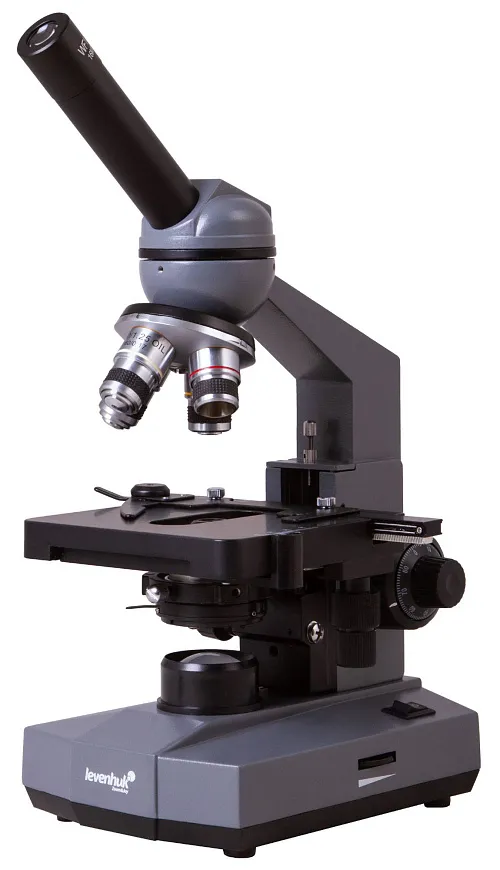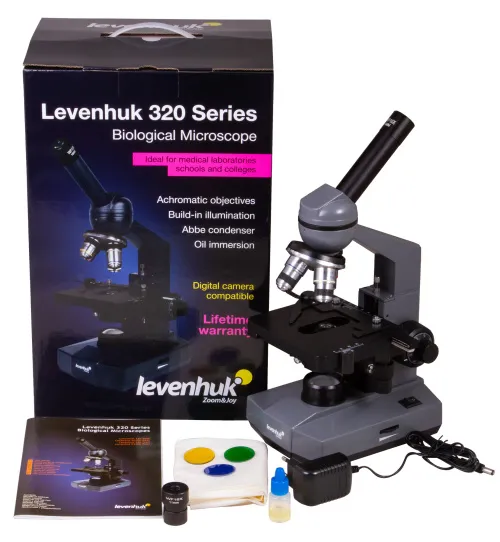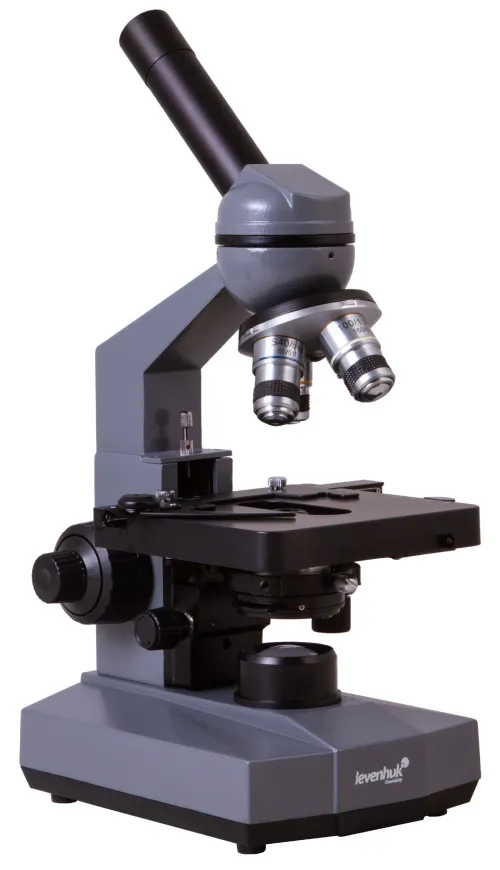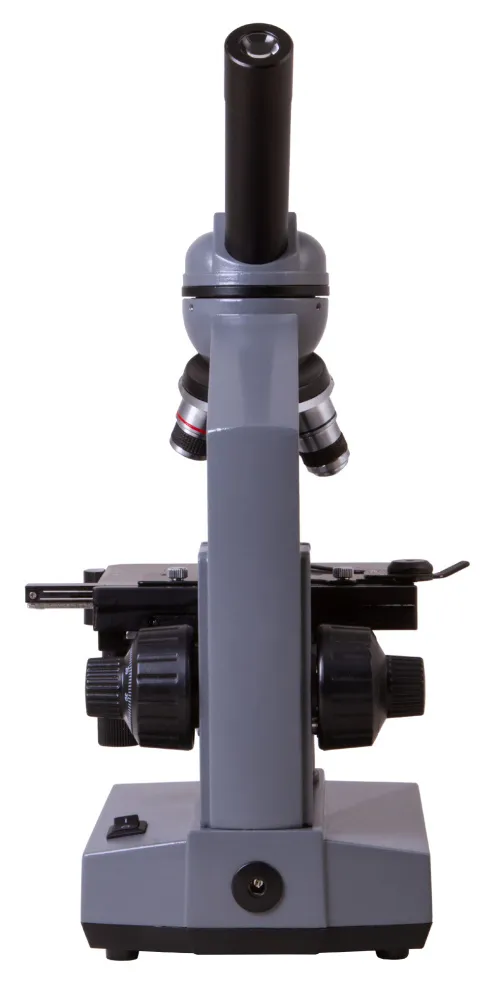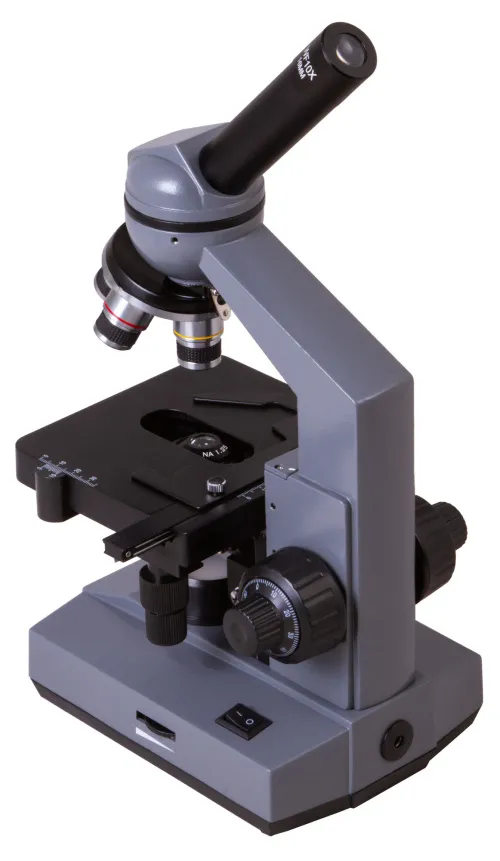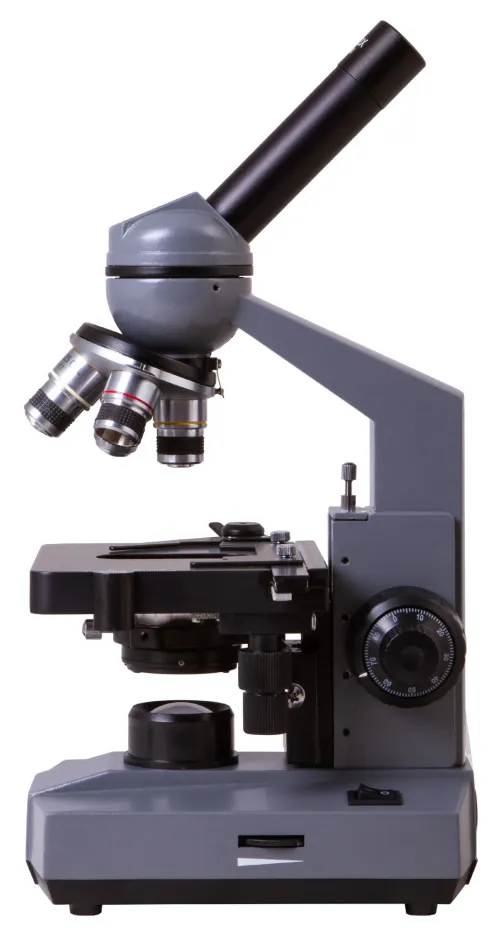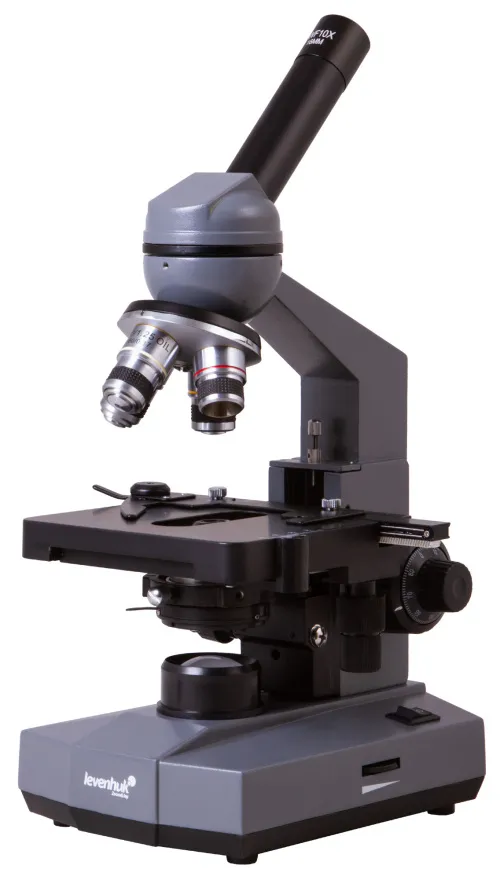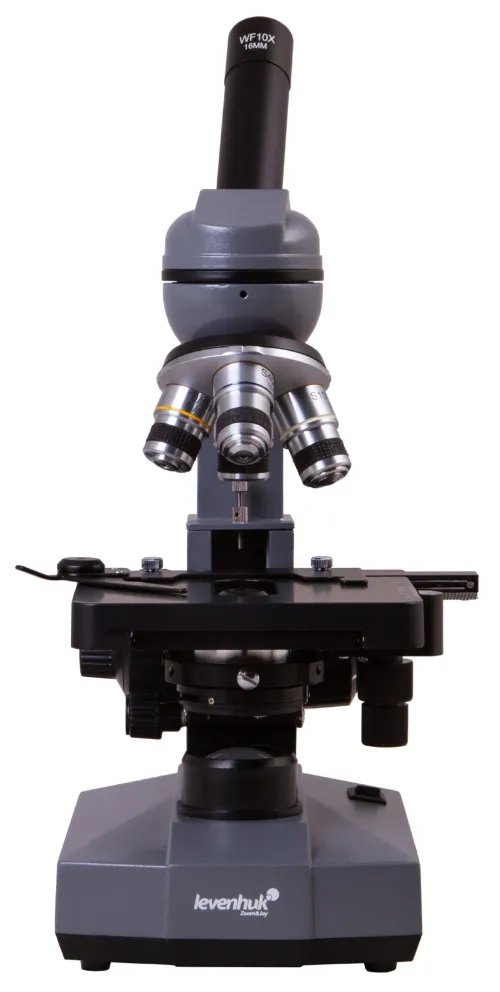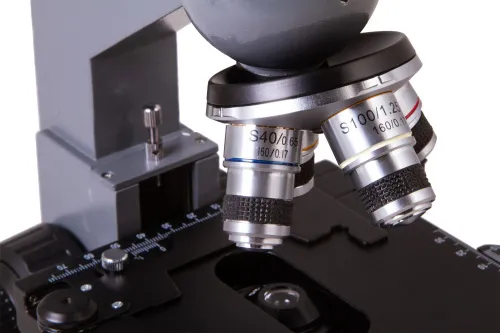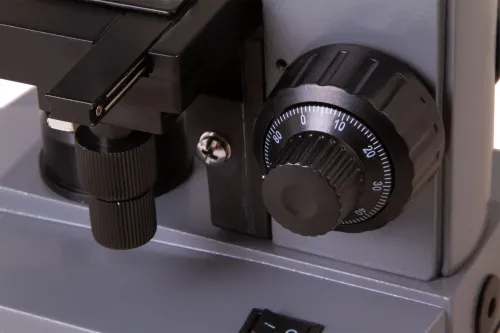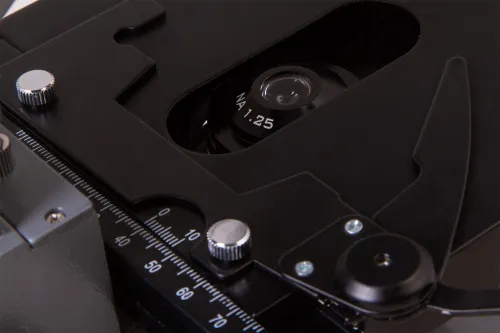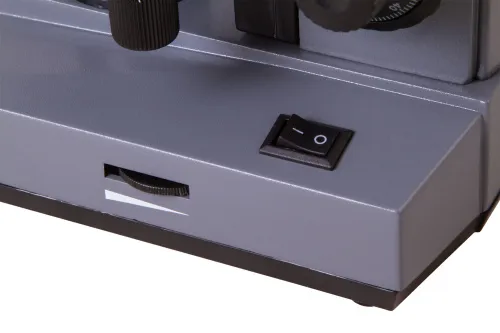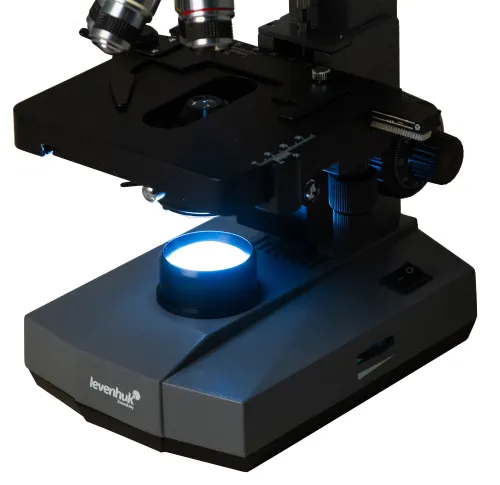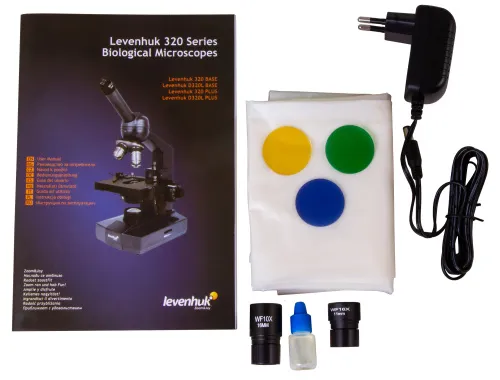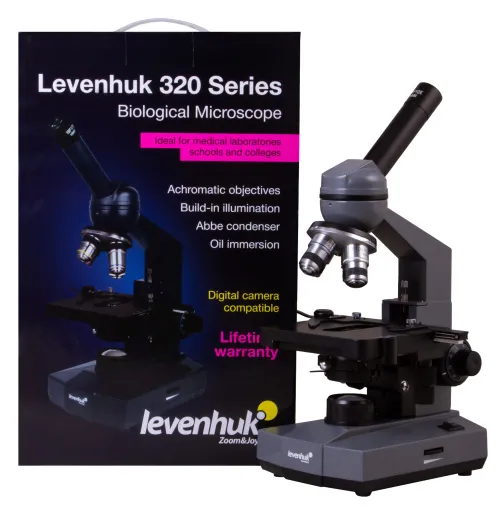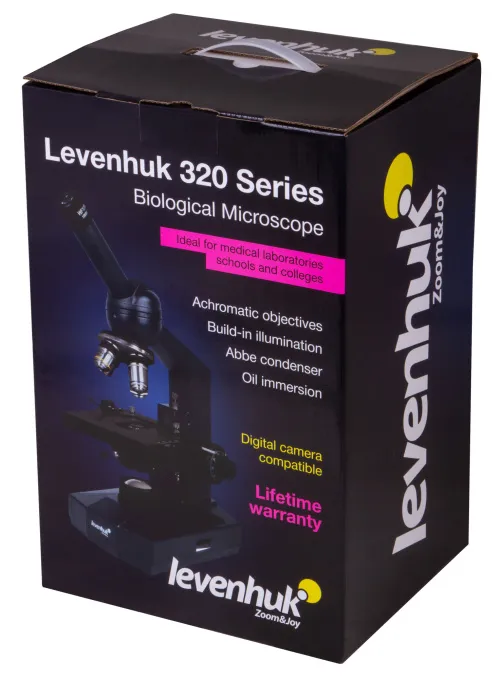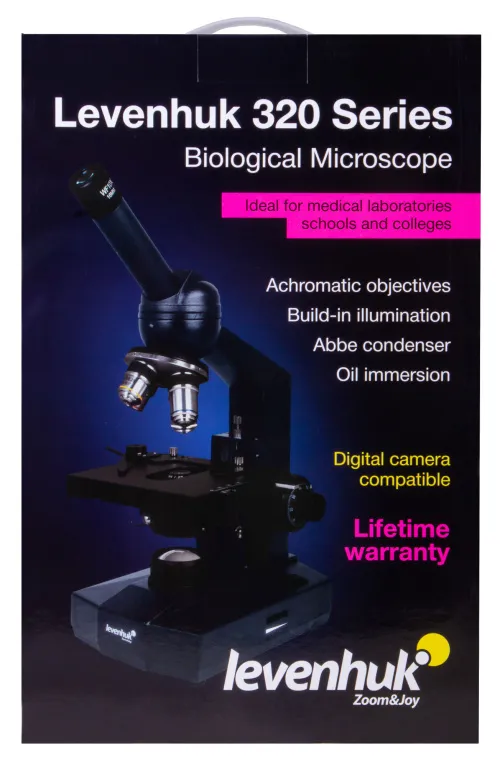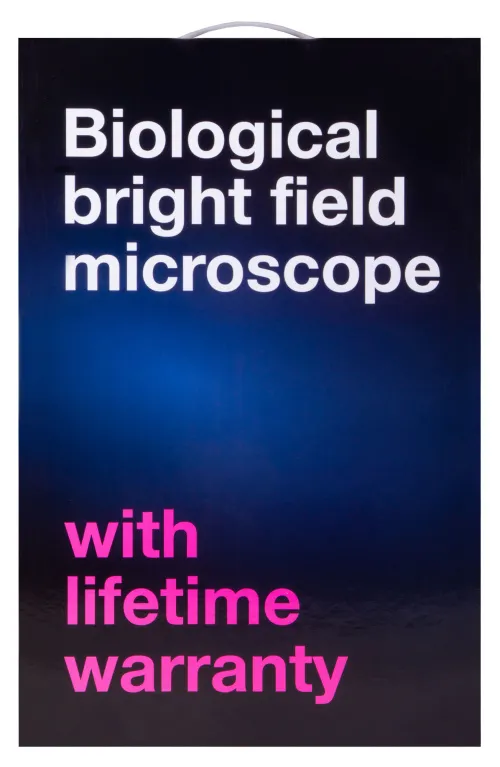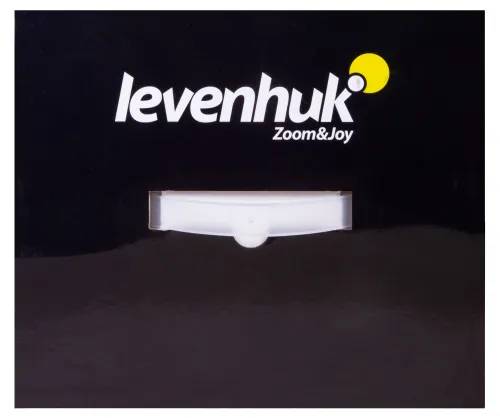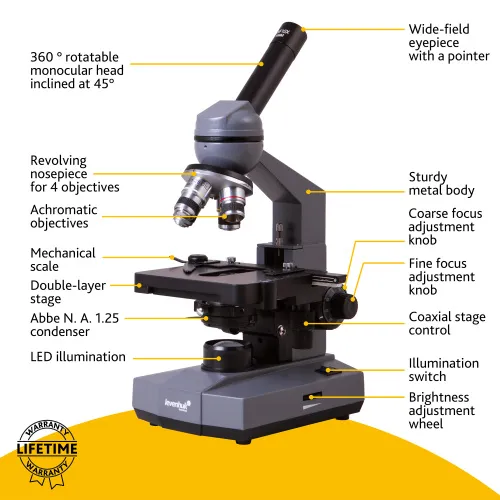Levenhuk 320 PLUS Biological Monocular Microscope
A monocular laboratory microscope with LED illumination. Magnification: 40–1600x
| Product ID | 73795 |
| Brand | Levenhuk, Inc., USA |
| Warranty | lifetime |
| EAN | 5905555004495 |
| Package size (LxWxH) | 39x25x21 cm |
| Shipping Weight | 3.26 kg |
Levenhuk 320 PLUS is a professional laboratory microscope with a monocular head. Due to the achromatic optics and wide-angle eyepieces with a pointer, specialists in research laboratories, diagnostic laboratories, and scientific and research institutions highly appreciate its possibilities. The microscope is suitable for performing observations in various scientific fields and can be applied for pathologo-anatomic, urological, and other research.
The microscope features a monocular head that rotates 360°. Its inclination angle is 45°. The revolving nosepiece has four achromatic objectives that deliver a clear and contrast image without aberrations. When a 100x objective is used, observations can be performed using oil immersion (a bottle with immersion oil is included in the kit). The microscope features magnification within the range of 40 to 1600x.
The stage is equipped with a mechanical scale. Underneath, there is an Abbe condenser with iris diaphragm. You can install light filters in a microscope. Three filters are included in the kit. LED illumination with brightness adjustment is located in the lower part of a microscope, which is why observations are performed in transmitted light. Illumination can be powered by an AC supply or batteries.
Features:
- Inclined monocular head, 360° rotatable
- Magnification range: 40–1600x
- Achromatic objectives, wide-angle eyepieces with a pointer
- 0.75W LED illumination with brightness adjustment
- Powered by an AC supply or batteries
The kit includes:
- Microscope
- Achromatic objective lenses: 4x, 10x, 40x and 100x (oil immersion)
- Wide-angle eyepieces with a pointer: WF10x and WF16x
- Filters: blue, green, yellow
- Bottle of immersion oil
- AC adapter
- Dust cover
- User manual and lifetime warranty
Caution! Remember that mains voltage in the U.S. and Canada is 110V and 220–240V in most European countries. Please refer to the specifications table for the correct mains voltage and never attempt to plug a 110V device into 220V outlet and vice versa without using a converter.
You can see that under a microscope:





Levenhuk 320 PLUS Microscope is compatible with Levenhuk digital cameras (purchased separately). Levenhuk cameras are installed in the eyepiece tube instead of an eyepiece.
| Product ID | 73795 |
| Brand | Levenhuk, Inc., USA |
| Warranty | lifetime |
| EAN | 5905555004495 |
| Package size (LxWxH) | 39x25x21 cm |
| Shipping Weight | 3.26 kg |
| Type | biological, light/optical |
| Microscope head type | monocular |
| Optics material | optical glass |
| Head | 360 ° rotatable |
| Head inclination angle | 45 ° |
| Magnification, x | 40 — 1600 |
| Eyepiece tube diameter, mm | 23.2 |
| Eyepieces | WF10x with a pointer, WF16x with a pointer |
| Objectives | achromatic: 4x, 10x, 40xs, 100xs (oil immersion) |
| Revolving nosepiece | for 4 objectives |
| Stage, mm | 110x125 |
| Stage moving range, mm | 58/25 |
| Stage features | mechanical double-layer |
| Condenser | Abbe N. A. 1.25 with an iris diaphragm |
| Diaphragm | iris |
| Focus | coaxial, coarse (20mm) and fine (0.002mm) |
| Body | metal |
| Illumination | LED |
| Brightness adjustment | ✓ |
| Power supply | 220V/50Hz or 3 AA batteries (not included) |
| Power supply: batteries/built-in battery | yes |
| Light source type | 0.75W |
| Light filters | blue, green, yellow |
| Additional | immersion oil included |
| User level | experienced users |
| Assembly and installation difficulty level | easy |
| Application | laboratory/medical |
| Illumination location | lower |
| Research method | bright field |
| Pouch/case/bag in set | dust cover |
We have gathered answers to the most frequently asked questions to help you sort things out
Find out why studying eyes under a microscope is entertaining; how insects’ and arachnids’ eyes differ and what the best way is to observe such an interesting specimen
Read this review to learn how to observe human hair, what different hair looks like under a microscope and what magnification is required for observations
Learn what a numerical aperture is and how to choose a suitable objective lens for your microscope here
Learn what a spider looks like under microscope, when the best time is to take photos of it, how to study it properly at magnification and more interesting facts about observing insects and arachnids
This review for beginner explorers of the micro world introduces you to the optical, illuminating and mechanical parts of a microscope and their functions
Short article about Paramecium caudatum - a microorganism that is interesting to observe through any microscope
Thank you or your query.
Levenhuk 320 PLUS Biological Monocular Microscope is compatible with Levenhuk M BASE and Levenhuk M PLUS digital cameras. The camera is installed in the eyepiece tube in place of the eyepiece.

